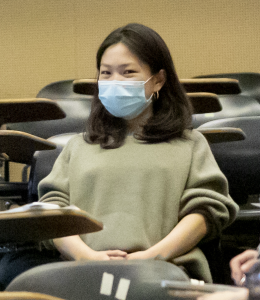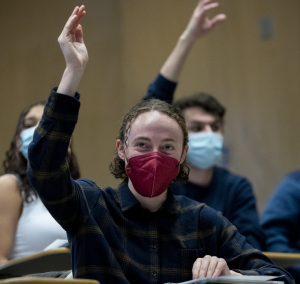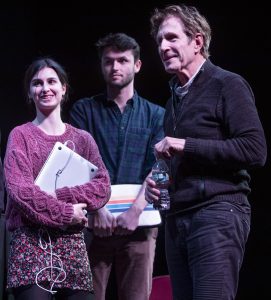By Michael Jones (BFF ’19, Bates Class of 2020)
The Bates Film Festival is an experience that one may never see coming in their lifetime, especially if they’re coming from a background enveloped in preconceptions about this non-Hollywood style of theatre. De Valck hits the nail on the head with common personal precognitions and for many in regards to thought inclinations as, “European cinemas as art or high culture and Hollywood as mass entertainment or popular culture” (De Valck, 2016: 3). It’s not hard to come to these notions with the egregious amount of Hollywood movie advertising in America and the similar film structure among the top popular hit or miss films/sequels; the expected forms that all these films display creating a ‘bubble’ of a film format that directors of the field become limited by.
“For the choices surrounding the featured films, the committee prioritized a variety of topics discussed such as racial inequality amongst minorities, injustices surrounding the treatment of those who are transgender, women protagonists and cultural variety (directors who might come were only made a consideration after the films selected were picked).”
However, these limitations only apply to those who wish to participate in such a game of “follow this golden road to become famous,” though a gold that is covering miles of concrete mediocrity, similarities, and admittedly a few gems within the dust. The commonalities one may perceive across the production of many films is what causes Hollywood film nature to be a part of popular culture (thrilling, exciting, straight to the action), just as pop music shares its similarities. Both the descriptions recently given of Hollywood films and Europeans ‘high cultured’ cinemas, “fail to do justice to the complexity of all the actual forces at work” (De Valck, 2016: 3). First, I will give some more contextual background on the nature of film festivals then I will go in depth on Bates Film Festival 2019 programming and how it is able to capture what many casual film goers do not see through the choices surrounding the ideas of the programming crew.

The first film festival which took place in Venice 1932, “was presented as an international and glamorous event attended by an elite audience of film professionals” (de Valck, 2016: 10). Film festivals began as a hierarchy and are now attended by many people who are not “the elite” which allows them to be used as a tool to bring communities together. There is no longer a ‘special table’ or ‘grand seats’ but a grand stage for everyone to see the films equally. Secondly, the history of film festivals demonstrated a love-hate relationship with Hollywood whereas the way one was operated, “fundamentally differed from that of the economically-dominated Hollywood agenda” (de Valck, 2016: 11). The “festive” notions involved paparazzi, scandals and glamour, but the film part stayed true to acting, “as conveyors of cultural identity; as art and as unique artistic creations” (de Valck, 2016: 11). So this created a combination of artistic and economic approaches to construct what is seen in many film festivals. However, this unfortunately means that one side can sway the other and if a festival becomes persuaded by advertisements and other economic gain it could potentially marginalize the films shown. Lastly, there must be an understanding and compromise that, “film critics and filmmakers meeting at film festivals are not considered separate from the event, but whose congregations, performances and products are understood as necessary links that make up the event” (de Valck, 2007: 34). Bringing significant faces to a festival can always spark an engaging conversation, whether it’s the makers of a film, actors or anything of the sort. All of these were factors that the Bates Film Festival took into account.
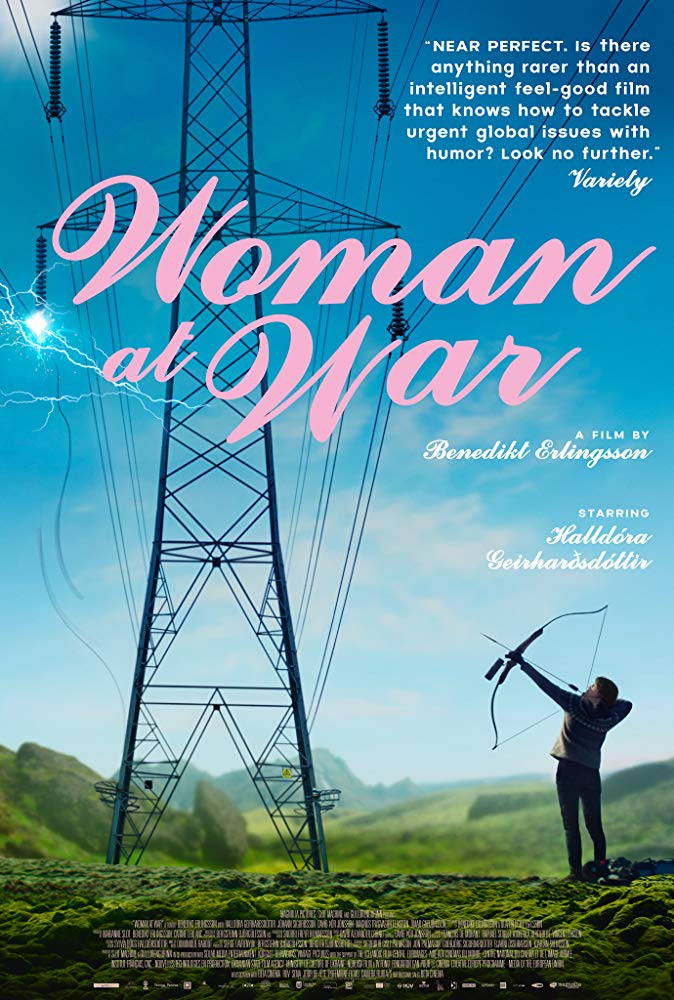
Now what does the Bates Film Festival bring to the table aside from establishing some of the best friendships forever one could hope to create in their life? Let’s begin. In regards to the seating choices and arrangements, the programming committee believed that Olin’s sloped room would provide an excellent venue for many of the films for the whole audience to see. In accordance with that, the Muskie Archives provided an excellent venue for the dinner movie plan featuring Tazzeka and Schaeffer Theatre to host the large crowd of The Last Black Man in San Francisco. For the choices surrounding the featured films, the committee prioritized a variety of topics discussed such as racial inequality amongst minorities, injustices surrounding the treatment of those who are transgender, women protagonists and cultural variety (directors who might come were only made a consideration after the films selected were picked). Within each of these choices to select the films was a mission statement that proudly represented each of the targeted concepts in order to connect and engage with the greater community while bringing to attention large social issues in the present society.
“Friendships were made, not over Netflix n’ Chill, but over BFF & Engage.”
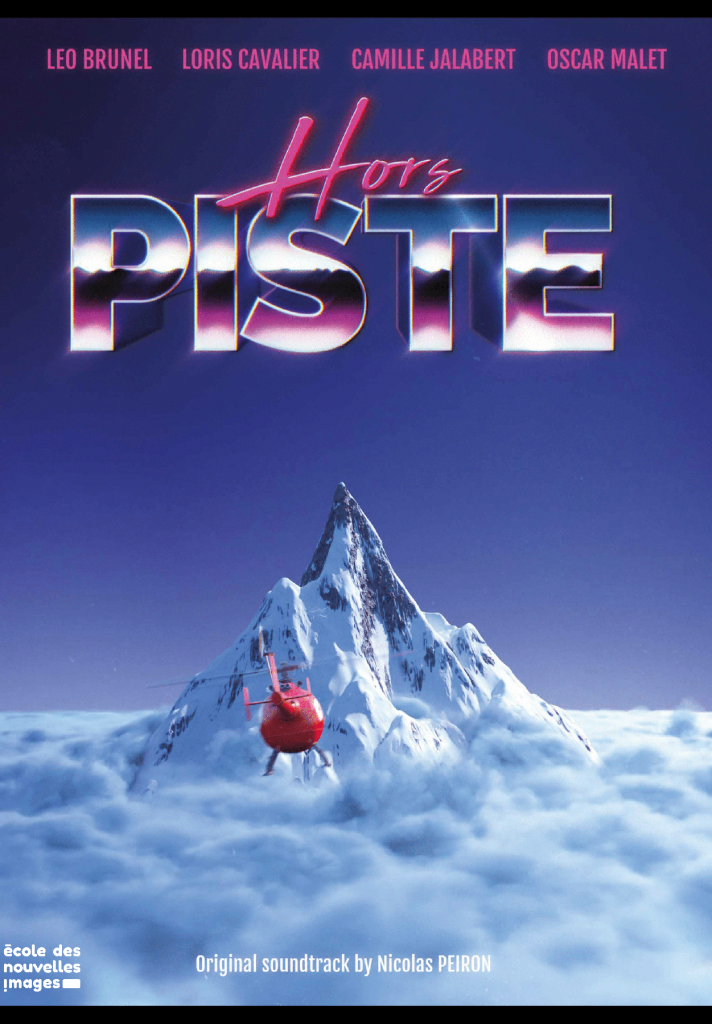
Among the choices made one which stood out to the team as a necessary inclusion which additionally also turned out to be the Audience Choice Award was Woman at War. This film also brought a pressing topic which was overlooked in the other films. This issue being climate change and with today’s circumstances there is no more relevant environmental subject. The Bates Film Festival committee actually rearranged the schedule and moved films around in order to add in this narrative feature-length film. Perhaps major film festivals could also open up to the practice of, for those that don’t already, to rearrange a schedule and include films that need to be experienced by the audience. The viewers of a film are not just an audience, but the people others walk by everyday in society, at the grocery store, on the highway, the park, friends, family etc. The BFF committee valiantly went to war with their inner hearts and in turn made accommodations for another major topic in society while also maintaining the diverse blocks which represented the Shorts. The array of titles for the Shorts section of the festival came together through a desire to include humor to put smiles on the faces of viewers before delving into grimmer topics. Quality was maintained with selections such as the comedic-action animation, Hors Piste, which was nearly unanimously voted into the programming list. Everyone worked together with different minds, but common goals to form what became the final selections. Friendships were made, not over Netflix n’ Chill, but over BFF & Engage. (In conversations of course, though like any engagement there were many passionate debates which furthered bonds.) Overall the Bates Film Festival became an unforgettable moment in my life and has encouraged me to visit more film festivals in the future. Do I recommend the experience? Would I recommend someone my favorite restaurant? Would I not tell my best friend to watch a life-changing film with me? If the answer isn’t more obvious, it’s yes!
Works Cited
de Valck, Marijke. “Introduction – Film Festivals as Sites of Passage.” In Film Festivals: From European Geopolitics to Global Cinephilia. 13-43. Amsterdam: Amsterdam University Press, 2007.
de Valck, Marijke. “Introduction: What is a Film Festival? How to Study Festivals and Why You Should.” In Film Festivals: History, Theory, Method, Practice. Marijke de Valck, Brendan Kredell, and Skadi Loist, eds. 1-11. New York: Routledge, 2016.



